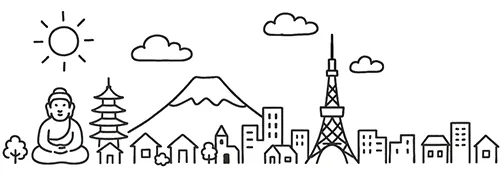When a loved one passes away, funeral customs vary widely across countries and cultures. In Japan, there is a distinctive “standard” style of funeral which many follow. In fact, around 90 % of funerals in Japan are held in the Buddhist style. In this article we’ll walk through the typical flow from death to cremation, outline the main styles and cost-ranges of funerals, and touch on recent trends toward smaller or simplified funerals such as family-only gatherings or “direct cremation”.
1. What’s the typical flow in a Japanese funeral?
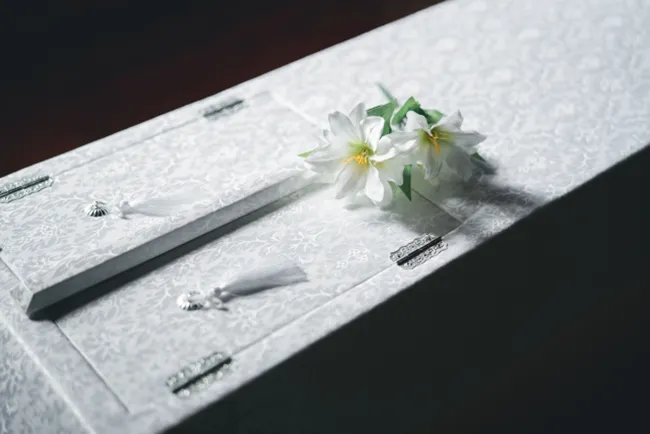
Here’s a simplified outline of the steps most often followed (assuming a more traditional, non-abbreviated format).
- Death and certification
The first step is obtaining the death certificate from the doctor or hospital. Notification to the municipal authorities must follow within a legally set period. - Wake (Otsuya)
Usually held on the evening before the main funeral ceremony. Close family, relatives and friends gather to console each other, offer incense, and have a last vigil with the deceased. - Funeral ceremony + Farewell (Sōshiki / Kokubetsu-shiki)
The next day (in many cases) the formal funeral ceremony takes place — led by a Buddhist priest if Buddhist style — with a reading of sutras, a new Buddhist name (kaimyō) for the deceased, and incense offerings or other ritual acts. After that comes the “farewell” part (often the same event) where friends and wider attendees pay respects before cremation. - Cremation and bone-collecting (Kaso / “kotsu-age”)
In Japan cremation is by far the most common. After the cremation the family picks up the bones, using special chopsticks, placing them in an urn in a sequence (feet first, head last) according to tradition. - Interment or placement of the urn
The urn with the ashes may be taken to a family grave, a temple’s ossuary, or other resting place. In many families, memorial services continue: e.g., a 7th-day service, 49th-day service, and then periodic memorials thereafter.
Note: While this describes the full traditional flow, many modern funerals in Japan simplify or abbreviate certain parts (for example skipping the two-day wake + funeral pattern, or going direct to cremation). We address that below.
2. What style of funeral is “standard” in Japan?

Yes — you can say that the “standard” funeral style in Japan is Buddhist-style. Key facts:
- Most Japanese funerals follow Buddhist rites. According to official and expert sources: “…funerals are officiated according to Buddhist rites nearly 90% of the time.”
- Cremation is almost universal (over 99% in some statistics).
- Other styles (Shintō, Christian, no-religion) exist but are much less common.
- The “wake → funeral → cremation” pattern is culturally established in Japan.
Because of these facts, when one refers to a typical Japanese funeral, one usually means a Buddhist-style funeral with those steps.
3. Typical cost ranges and what influences them

Cost overview
- According to a 2008 study by the Japan Consumers Association, the average cost of a Japanese funeral was about ¥2.31 million (approximately US $25,000 at that time).
- More recent data suggests that average spending per funeral may have declined (for example one 2022 article mentions around ¥1.1 million for many funerals) with growth in simpler formats.
- Cost components typically include: coffin, altar and decorations, priest’s fees (including for the kaimyō), catering/refreshments for guests, venue rental, transport of the body, urn, grave plot/urn placement, etc.
Cost categories (approximate meaningful ranges)
Here are some typical formats and their cost-ranges in Japan. Note: These are estimates, varying greatly by region, scale, and services chosen.
| Format | Description | Approximate Cost* |
|---|---|---|
| Full-scale traditional funeral (“General Funeral”) | Wake + funeral/ceremony + many guests + full services | ¥2 million+ (¥2.3 million typical earlier) |
| Family-only funeral (“Family Funeral”) | Smaller scale, close family & friends only, simpler services | Several hundred thousand yen to ~¥1 million+ |
| Direct cremation / “Fire-only” type | No wake or minimal ceremony, straight to cremation | Possibly < ¥500,000 (varies widely) |
* Based on data and estimation; actual cost depends on region (urban vs rural), venue, number of guests, religious involvement, etc.
Why costs are high / why they’re shifting
- Funeral industry in Japan is large and historically less transparent; the high cost for average funerals has been widely remarked.
- As society ages, families shrink, and the budget or social network for large funeral gatherings become smaller, more families shift to compact formats.
- Urbanization, fewer local community ties, fewer company-sponsored funerals, rising hall/venue costs all push up cost and encourage simplification.
4. Recent trends: Smaller, simpler, more flexible funerals
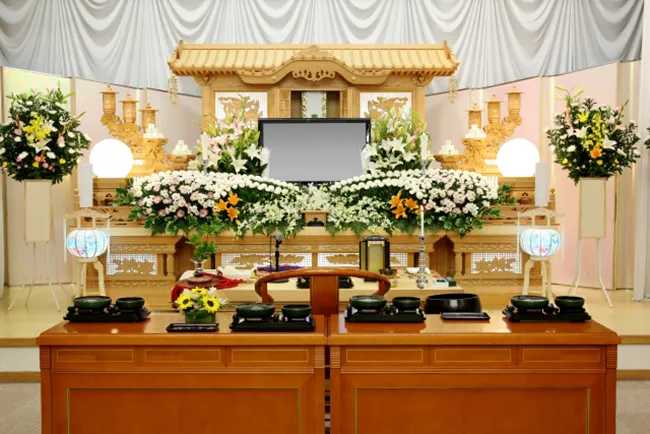
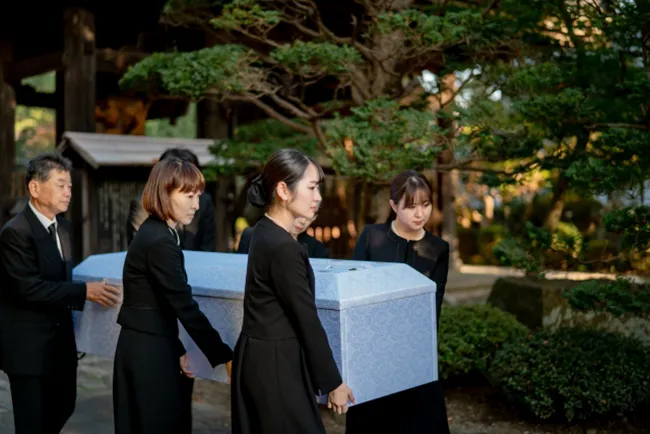
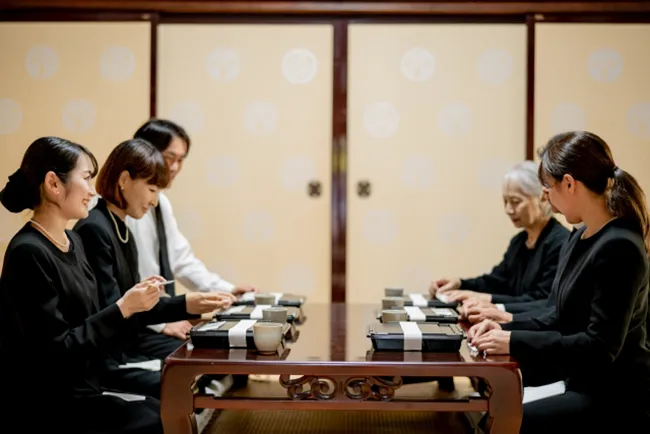
In recent years there has been noticeable change in how funerals are arranged in Japan:
- Smaller guest list: Many families now choose to invite only immediate family or close friends, rather than large numbers of acquaintances.
- One-day format: Instead of two days (wake then funeral next day), some funerals compress into a single day, or skip the traditional wake entirely.
- Direct cremation / minimal service: Some opt for minimal ceremony and go straight to cremation, especially when cost is a concern or the deceased had few survivors.
- Personalization and alternative formats: Younger generations or urban residents may choose funerals that reflect the deceased’s personality, fewer ritual components, or environmentally-friendly options (tree burials, communal ossuaries) rather than large ancestral graves.
These trends reflect changing demographics (smaller families, more singles, fewer children), changing values (less emphasis on large ritual for its own sake) and economic pressures (cost containment).
5. Why is this relevant for international readers?
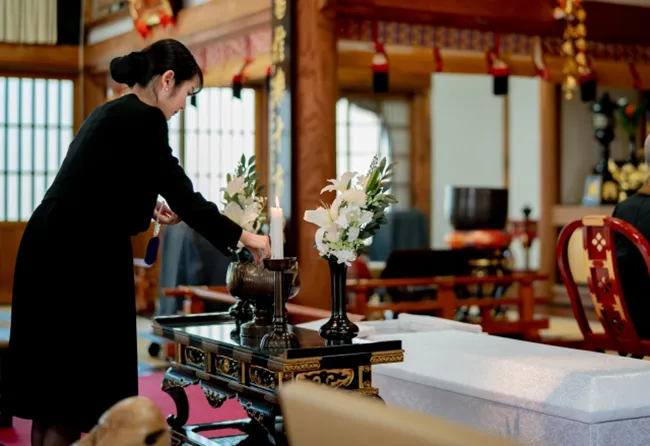
If you’re an expatriate in Japan, working with Japanese colleagues, or planning end-of-life arrangements in Japan (or with Japanese family links), it helps to understand:
- The funeral style you’re likely to encounter: Buddhist-style, cremation, formal attire (black suits/dresses), etc.
- The likely cost levels — so there are realistic expectations and potential planning.
- The shift toward smaller, simpler funerals, meaning that what you might expect from older Japanese tradition may now be varying widely.
- Funeral etiquette differences compared to Western styles (for example funeral gift money “kōden”, strict black attire, order of bone collection, etc.).
6. Summary
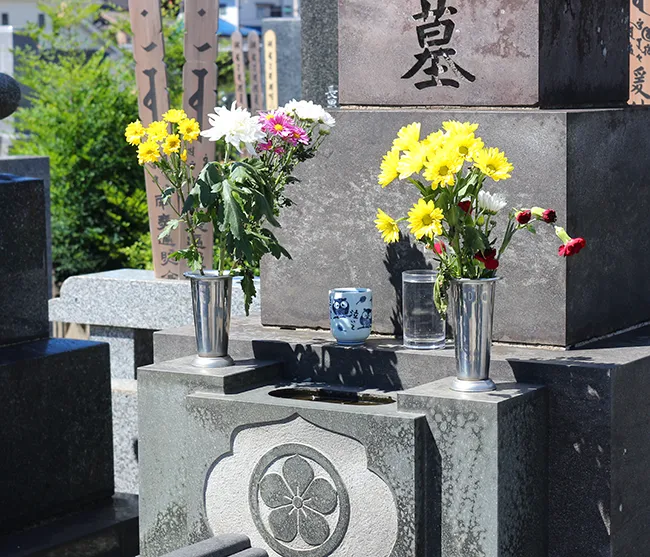
- In Japan the typical funeral is Buddhist-style, involving a wake, ceremony, cremation, and often subsequent memorial services.
- The average cost has been historically quite high (¥2 million+), though many recent funerals cost much less as smaller formats become common.
- Modern trends show increased use of simpler, family-only, one-day ceremonies, or even skipping parts of the traditional flow.
- Understanding these norms, costs and trends is helpful for families, expatriates, or anyone planning or attending a funeral in Japan.

Although I follow some Buddhist teachings, I wouldn’t say I’m a devoted Buddhist.
If I were to pass away, I don’t plan to have a Buddhist-style funeral.
There’s no need to invite a monk or place me in a grave — as long as I’m cremated without causing any trouble, that’s perfectly fine with me. lol
Thanks for reading!
If you enjoy my posts, your support really motivates me ☕
